History of the Tallberg Group
The history of the Tallberg Group starts in 1880, when the young Julius Tallberg bought the shares of an ironmonger’s from his two business associates and became an independent entrepreneur. Get to know the interesting and colourful story of the Tallberg Group below.
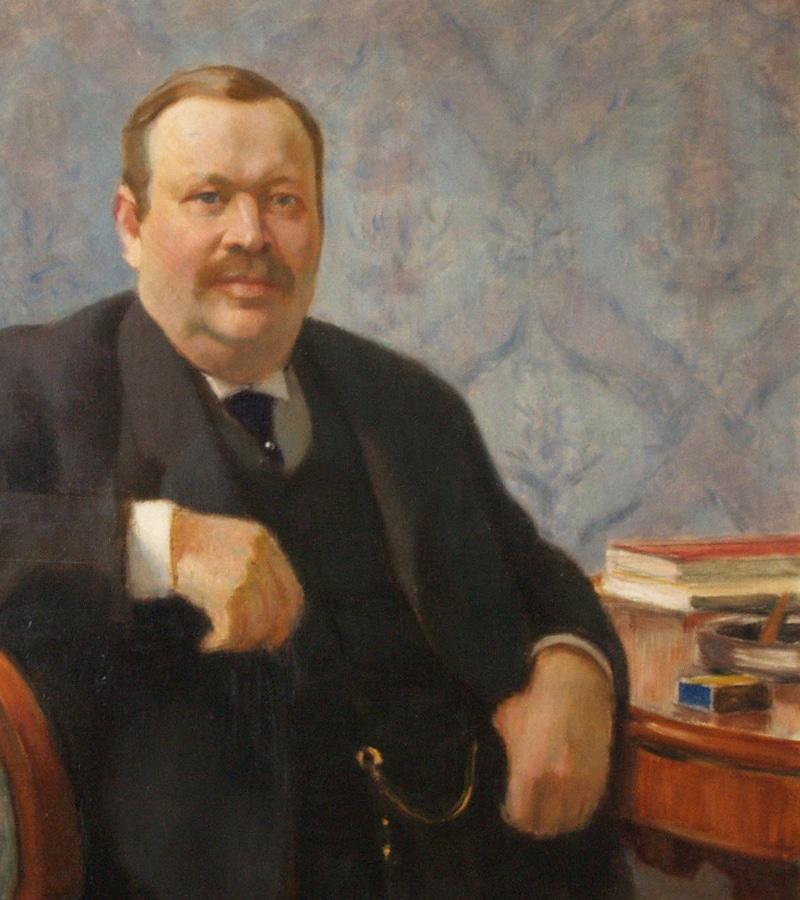
The Julius Tallberg era
Mathias Julius Hjalmar Tallberg was born on 25 May 1857. His father was called Carl Wilhelm and his mother Sofia Wilhelmina. After the death of his first wife, Julius’s father moved from the city of Pori to Turku, where he found work as the bookkeeper of the Kakola prison. A year later, he remarried Sofia, the daughter of Swedish bark-tanner master Henrik Enlund. Carl and Sofia had five children: four sons and a daughter. The youngest boy was called Mathias Julius Hjalmar.
His father died in 1870 when Julius was only 13 years old. His older brothers were already adults. The age gap between Julius and his brother born before him was eight years. The family didn’t have significant assets, which meant that the death of the father resulted in great financial difficulties. At the time, Julius was studying in the third grade of the Turku Gymnasium but had to drop out of school to find paid work. Julius’s first job was the ironmonger’s owned by Julius Torckell.
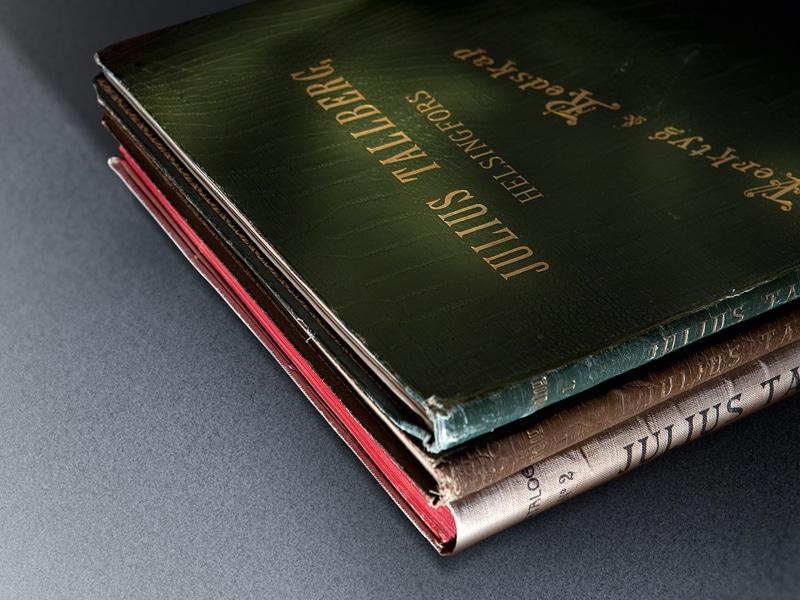
Natural-born merchant
The young Julius proved a born merchant and business manager. He was active and made bold alteration suggestions for the defects and grievances he observed. Well before turning 20, he was appointed the “shop’s oldest”, whose responsibilities included settling accounts for the company’s owner. Alongside working, Julius studied, although working days back then were long. He completed a bookkeeper’s degree with excellent grades, for instance. Julius was phenomenal at inventing new ideas: He suggested to his employer that they should organise a Christmas sales exhibition that had never before been seen in Turku. It was a success. He advised the business owner to establish a gunpowder and dynamite shop, which was also a hit. On his own, Julius taught himself to make fireworks, whichalso became bestsellers. When Julius left the shop’s service at the age of 21 and moved to Helsinki, Torckell sold his ironmonger’s and focused only on the gunpowder and dynamite business. This business idea developed by Julius had grown into the most profitable sector of Torckell’s business.
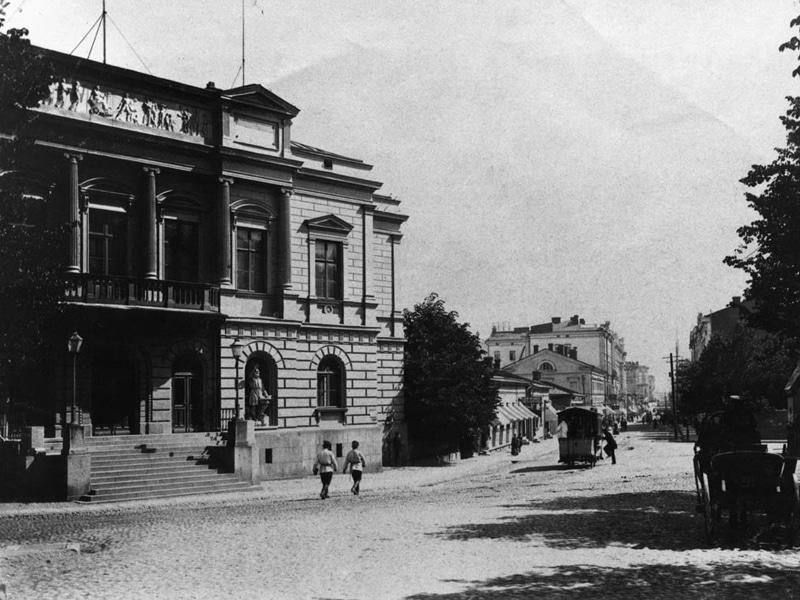
Bookkeeper in a big city
On 1 June 1878, Julius started as the bookkeeper of the Stockmann trading firm, which would later develop into the legendary Stockmann department store. In 1870, there were 32,000 residents in Helsinki, but in ten years, the population had boomed to more than 43,000. This meant that the pace of growth was astounding. Most buildings were wooden houses with one or two storeys. There was almost no industry to speak of. According to the statistics of 1860, Helsinki had only 45 factories, which employed approximately 800 people. In 1870, there were almost a hundred factories, with 1,500 people working in them. Only then did extremely strong growth begin: five year later, there were already 150 factories, with almost 3,000 employees. The service industry was also booming. The city had up to five hotels and plenty of restaurants and cafés.
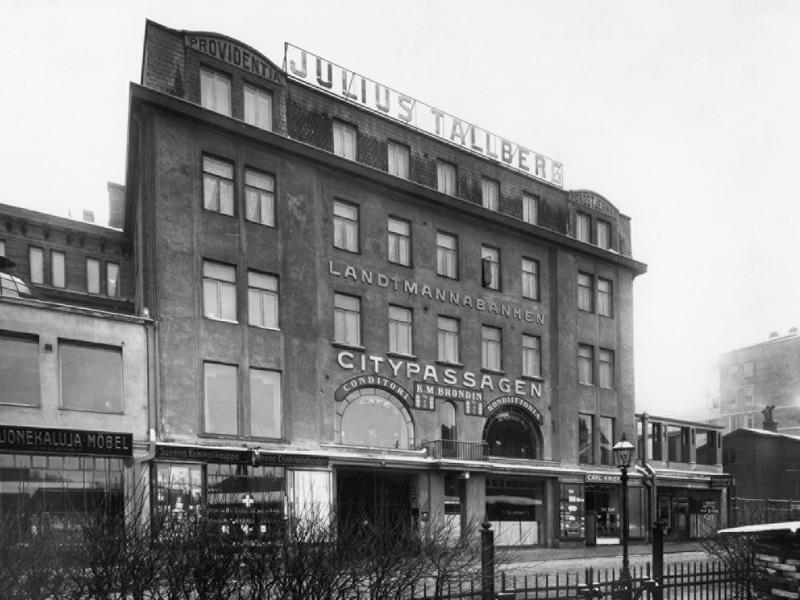
Entrepreneur by chance
As strange as it may sound, the hard-working and meticulous Julius got the incentive to start his own business from a small misdemeanour while working for Stockmann. It was a beautiful summer morning when he went for a swim at the Kaivopuisto seashore. He enjoyed swimming so much he was late for work. He was reprimanded by his supervisor, and dismissed for his unpunctuality and not complying with his supervisor’s instructions. We have reason to believe that this was the incident that made him become the master of his own fate.
Around that time, Julius had befriended two men working in the construction industry. One was architect Constantin Kiseleff, and the other master builder Elia Heikel. One day, Julius entered a building company owned by these gentlemenand asked for funding to open a new building supply shop. Kiseleff and Heikel believed in Julius’s abilities so much that they became his business associates. So, on 13 March 1880, the trading company we nowadays know as the Julius Tallberg Corporation was established. Seven years later, Julius, hardly in his thirties, acquired the shareholdings of the other two partners for himself. The building supply shop became a limited company in the reorganisation that took place in 1923–25. The first shop was located in connection with the Kiseleff and Heikel building company in Kruununhaka. The house was at Konstantininkatu 14.
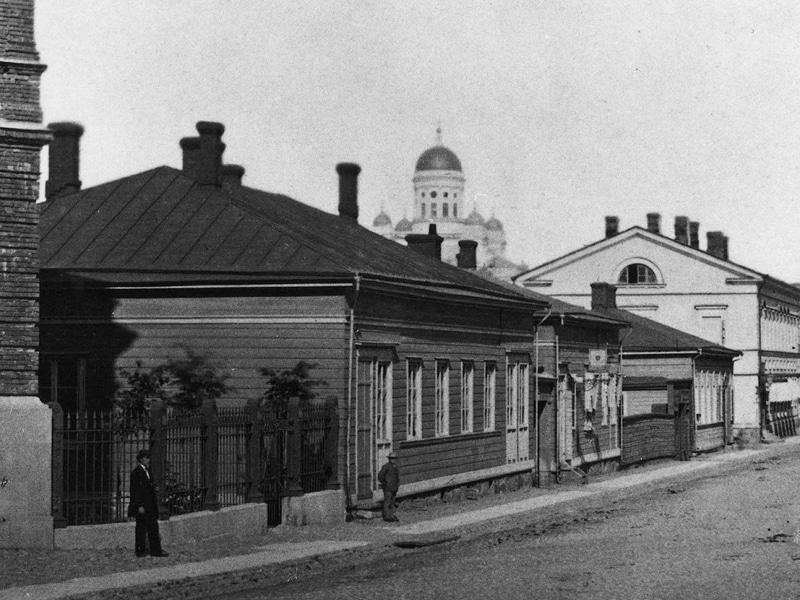
From a box of nails to a partner
The beginnings were humble. Every weekday morning, Julius set out from Kruununhaka to the market square with a box of nails. Back then, nails were sold by the piece, and the market square was a busy trading place: people from the countryside gathered there to sell their products and while there, they bought iron nails and other building supplies smiths back in the village couldn’t make. After a few years’ operation, the shop moved to a better location in the future city centre in a building that was where the present-day Aleksanterinkatu 19 is. Three years later, the shop moved to the plot where the Stockmann department store is now. In 1887, Julius acquired the shares of the other owners and continued the operations alone. He developed the shop incredibly quickly. He expanded the shop, increased wholesales in Helsinki and established sales warehouses throughout Finland. He had gunpowder and dynamite warehouses in several towns and cities. In addition, he became a partner in ironmonger’s and building supplies businesses operating elsewhere in Finland.
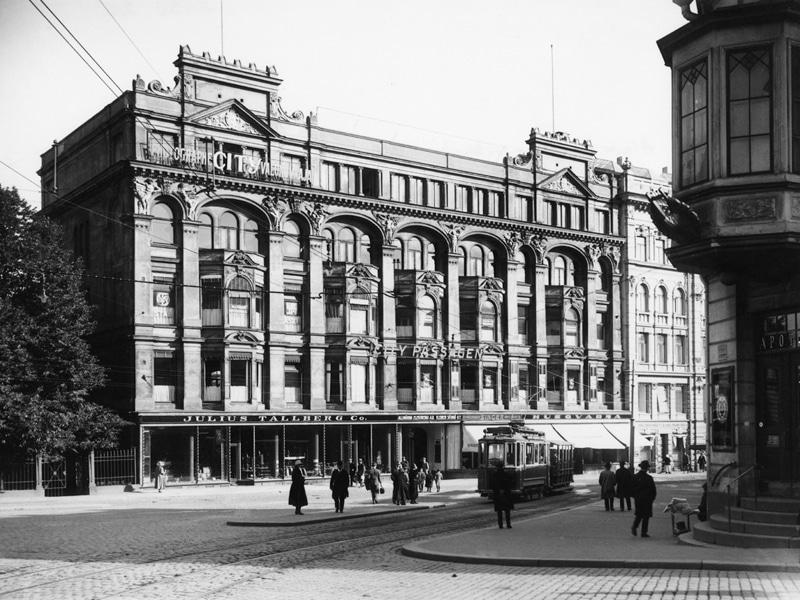
A pioneer, builder and entrepreneur of many industries
It seems Julius never rested. He was a pioneer in many industries. He established the first concrete prefabrication factory in Finland. The factory’s early works included the facades of Hotel Kämp, the House of the Estates, the National Archives building and St John’s Church. He was also the man behind the country’s first building mortar factory. In addition, he opened a wallpaper shop, a Husqvarna shop and a brick factory. He was involved in establishing many other companies, too: Finska Forcit Ab, Ruskealan Marmori Oy, Lojo Kalkverks Ab etc. At the same time, he engaged in building operations at such a scale that he was called the best customer of his own ironmonger’s.
One of his most ambitious projects was to build his own business palace at Aleksanterinkatu 21. This building, still known as the Tallberg landmark in the city centre, was a true palace in its day in comparison with the other buildings in the area. When the shop moved to the new premises, it was expanded by opening special sections for machines and tools. This is how Julius defined the operating method of his shop: “The aim of the shop is to always, if possible, to acquire only prime goods and keep its warehouses as full as possible.” Tallberg also bought all the neighbouring plots. His intention was to realise another of his dreams, the Citykäytävä corridor from the Tallberg building to the railway station, with Eliel Saarinen.
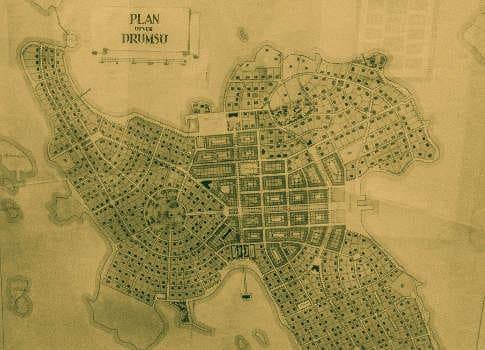
An island of his own: Lauttasaari
The most significant land acquisition by Julius Tallberg was the purchase of Lauttasaari– even if he closed the deal half by accident. At the Helsinki City Council, he was an adamant spokesperson for the expansion of the capital. He thought that Lauttasaari was perfect additional land for the needs of the growing city. The Wawulin family, who then owned most of the Lauttasaari island, offered it to the city, but the council thought the price was too high. Tallberg didn’t give in: he haggled the price down, bought the island for himself and then offered it to the city at the same price. However, many suspected that the transaction would benefit Tallberg, which is why the city council also rejected this offer. This meant that Tallberg was left with the island, which caused many problems for its owner in the early days. Julius had tied up all his money almost down to his last penny in the land deal. Regardless of this, he survived the troubled times and didn’t regret the purchase.
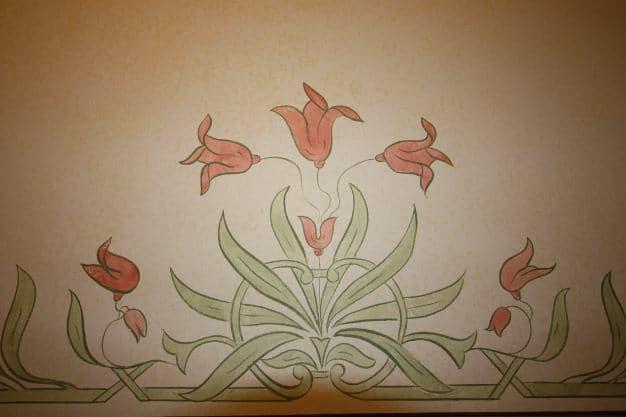
More residents and traffic arrangements
The main building of the Lauttasaari Manor, which is still in use, was already built in the early 1800s. Back then, the manor, and with it, almost the entire island, belonged to Counsellor of State Claes Wilhelm Gyldén. In 1871, the manor was acquired by the Wawulin family. During their time, the Russians built fortifications on the shores of Lauttasaari and spoilt the scenery, many thought. Villas were built on the island during the Wawulin era, and plots were separated for new farms. In 1911, the Wawulin family offered their land to the city for the first time. Back then, there were 100 rental plots on the island, and 17 lots of land owned by private individuals. The manor’s lands covered 255 hectares.
Already the Wawulin heirs had plans to parcel Lauttasaari into villa plots, but only Julius Tallberg started the determined work to increase the number of residents on the island. There was no bridge to the island, only steamships travelling from the city to the island and back. Julius established a horse-drawn tram from the ship pier to Katajaharjunniemi, and in the spring of 1914, he bought a steam ferry to take passengers from the beginning of the current Lauttasaarentie across the sea to Ruoholahti. Horses drew the trams until the autumn of 1917, when the tracks were demolished. However, the ferry continued to operate until 1935, when the Lauttasaari bridge connecting to the new Jorvaksentie was opened for traffic.
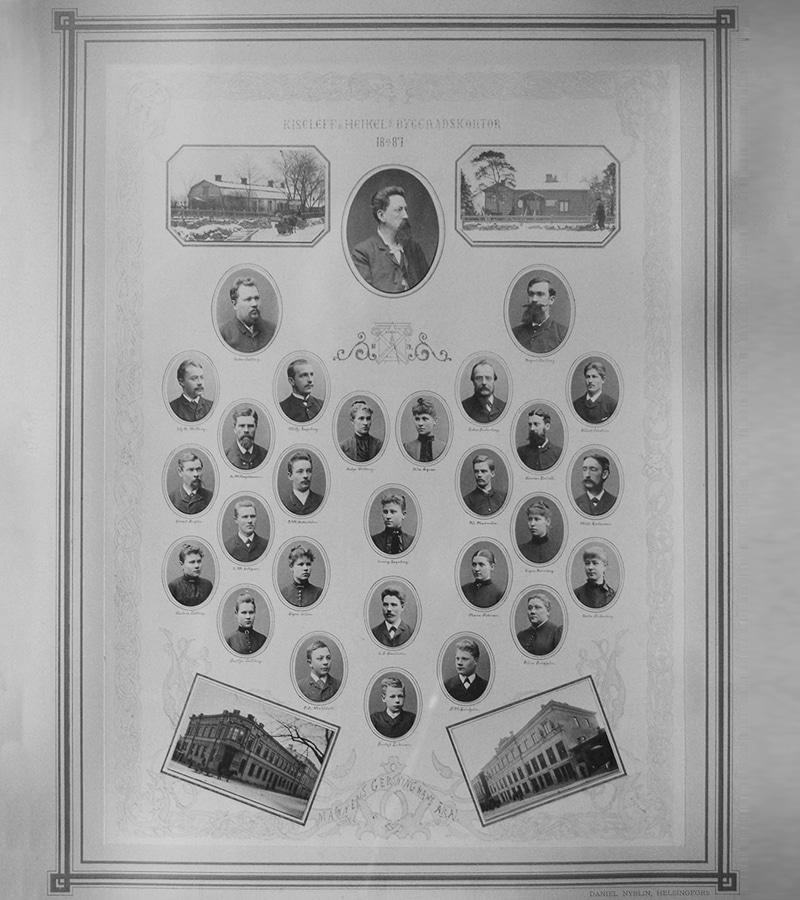
For the benefit of society
Julius Tallberg was an open and sociable man. He did not limit himself to his work surroundings but actively participated in promoting social matters. He was elected to the Helsinki City Council at the age of 31, and his efforts for the development of the city were quite significant. A good example of this is the newspaper causerie by “Mr Loudmouth”, which discussed the city’s red tape. Among other things, he said: “… there is only one municipal politician in this beloved hometown of mine, one grown man with the required vision, courage and practical mindset of a business man. Julius Tallberg might well steer the municipal economy to a productive path. He should be equipped with the authority of a municipal managing director…” Julius Tallberg had a significant career in the development of Finland’s financing market, and he was a member of the Board of Directors of O.Y. Suomen Kaupunkien Hypoteekkikassa from its establishment in 1895 until 1917.
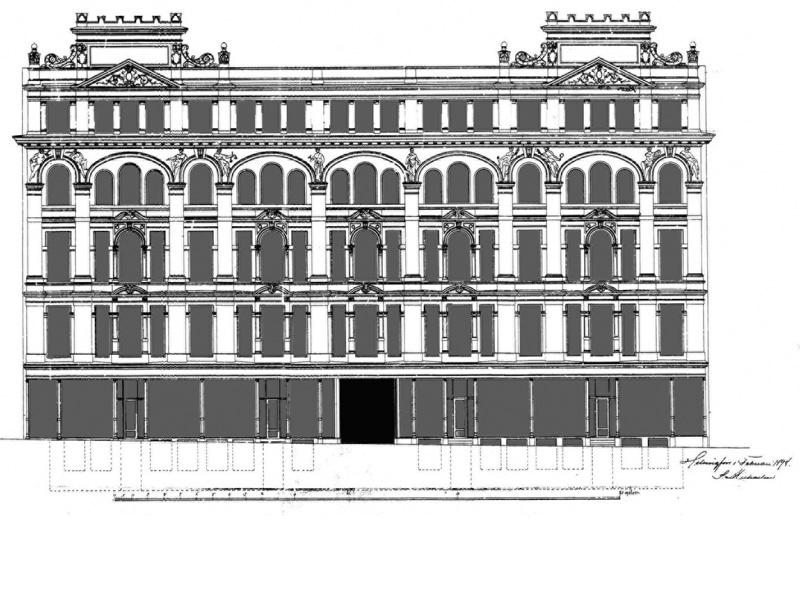
An exceptional master with a heart of gold
In the 19th century, workplace democracy was not a common topic. There was no dispute over the owner of the shop or factory resolving all arguments and quarrels. This easily resulted in employer despots who were feared by employees. But some were born leaders, like Julius Tallberg. He demanded a lot from his employees but also set an excellent example of hard work, punctuality and equality. It has been said that he had a greater sense of social justice than many people today. He tried to look after the comfort of his employees in every possible way, both at work as well as outside it – a characteristic that was very rare at the time. He threw annual parties for his employees and their families. These occasions were often great experiences for the participants. In the early days of the shop, trips were organised for the personnel to Lauttasaari, where Julius Tallberg had a villa long before he bought the entire island. When the number of employees grew, the trips were replaced with personnel celebrations in city restaurants.
There was an exceptionally warm and patriarchal relationship between the master and his subordinates. In the early 1900s, society didn’t offer many social benefits for its citizens. There was no health insurance or basic pensions. The only way to have social security was to save money yourself for a rainy day. However, this wasn’t possible for everyone. With the best of his employees in mind, Julius Tallberg set up a pension fund for his employees that remained in operation until the 1990s. Julius Tallberg also supported the sporting hobbies of his employees generously. His sports association, JT-Urheiluseura, was established as early as 1908.
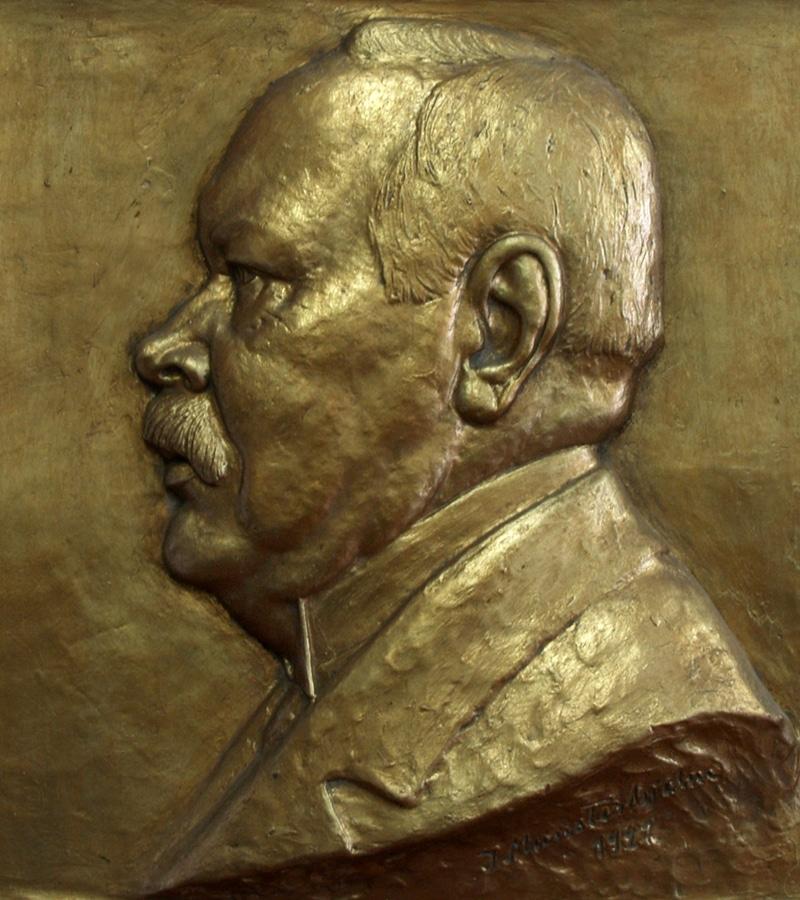
The end of an era
Julius Tallberg was a man with energy for many industries. He turned his own shop into a corporation that employed more than a hundred people at the time of Julius’s death. He also had plenty of holdings in companies other than his own. He built dozens of stone buildings in Helsinki and participated in several construction projects in different parts of the country. He was active in the municipal politics of Helsinki and participated in the activities of many ideological organisations. He was also involved in the establishment of the Helsinki Stock Exchange building and the Helsinki Bourse Club. He set up foundations and made several significant social donations. Among others, Julius Tallberg established the Pro Helsingfors foundation “to look after the beautification of the city and the conservation of nature”. Among other things, the foundation donated the Three Smiths Statue by Felix Nylund to the City of Helsinki.
Julius Tallberg was married twice. In 1880, he married Bertha Ågren, who died in 1911. Two years later, Julius, then 54, married Alli Ahrenius. During the first marriage, the family was blessed with nine children between 1881 and 1898.
When Julius Tallberg died on 13 May 1921, he was recuperating in the spa city of Nauheim in Germany. He left behind a vacuum that was hard to fill. His funeral was held at the Old Church in Helsinki on Thursday, 26 May.
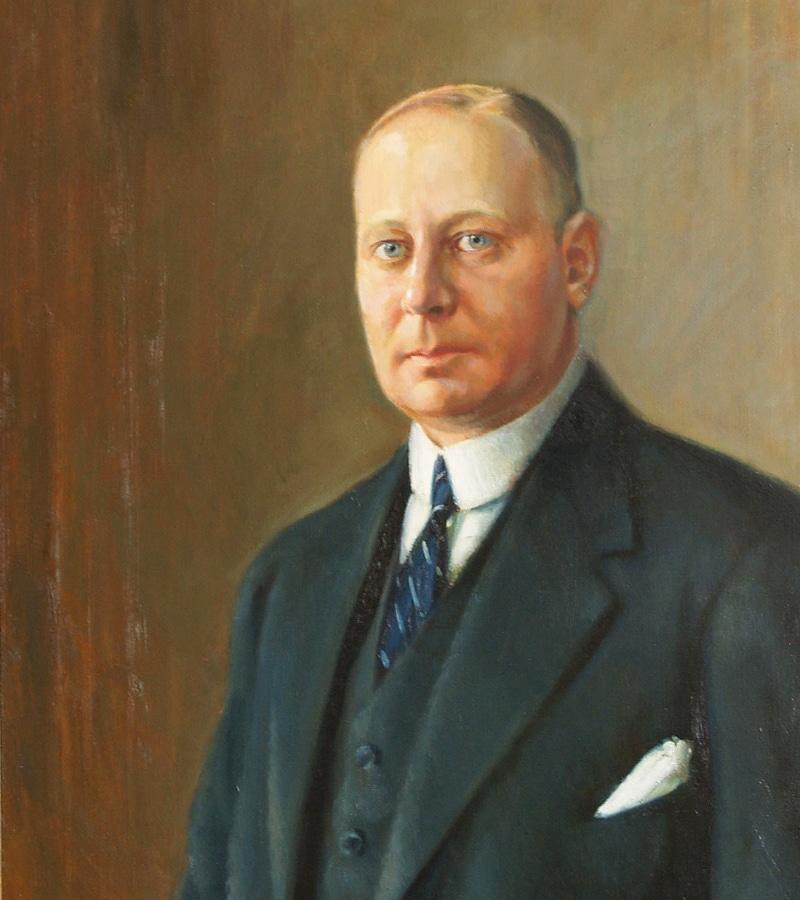
From Julius Tallberg to the 1990s
After the death of Julius Tallberg, the two eldest sons of his nine children started running the company. They had already helped their father for years, the older since 1904 and the younger only two years fewer. Both had received excellent business management training in Finland and abroad. Tasks were divided between Gunnar and Bertil Tallberg, with Gunnar taking over the duties of managing director and being responsible for Lauttasaari and other “side operations”. The ironmonger’s and building supplies shop was led by Bertil Tallberg. In 1928, Gunnar gave up his role as the managing director because of his poor health and handed over the main responsibility for the company to his brother.
Gunnar Tallberg died in 1931. After this, Bertil invited the judge Aarne Castrén to serve on the company’s Board of Directors. Bertil trusted Castrén’s administrative and judicial expertise unconditionally. Aarne Castrén remained a member of the board until 1969, serving as the chairperson of the board for the last six years.
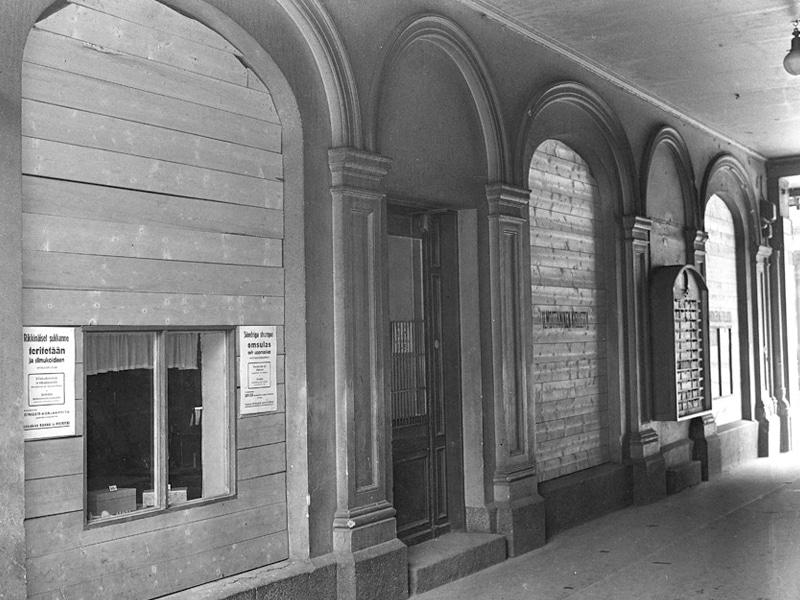
Difficult wartime hinders operations
With Councillor of Commerce Bertil Tallberg in the lead, the company fought its way through the depression in the 1930s, when industry came almost to a halt, and the queues of the unemployed were long. Social welfare was still almost non-existent, and the depression meant squalor for hundreds of thousands of people. In those days, each and every job was a true stroke of luck. The company was fortunate to find a small business niche: although industrial operations were weak at the time, construction was still being undertaken in the country, and Tallberg was still primarily a building supplies shop. Building companies and individual builders alike needed this and that, and they bought it from Tallberg. Indeed, the company made it through troubled times with relatively little damage. During the Second World War, Tallberg was managed by women and the elderly for a long period, because almost all the healthy men were at the front. A great example of Tallberg’s operations is that all employees were kept on as Tallberg employees throughout the war. And this was done very concretely: Tallberg paid half their salary to all men called up throughout the war. Such actions were a great strain on the company but a great help for the employee receiving the salary and their family.
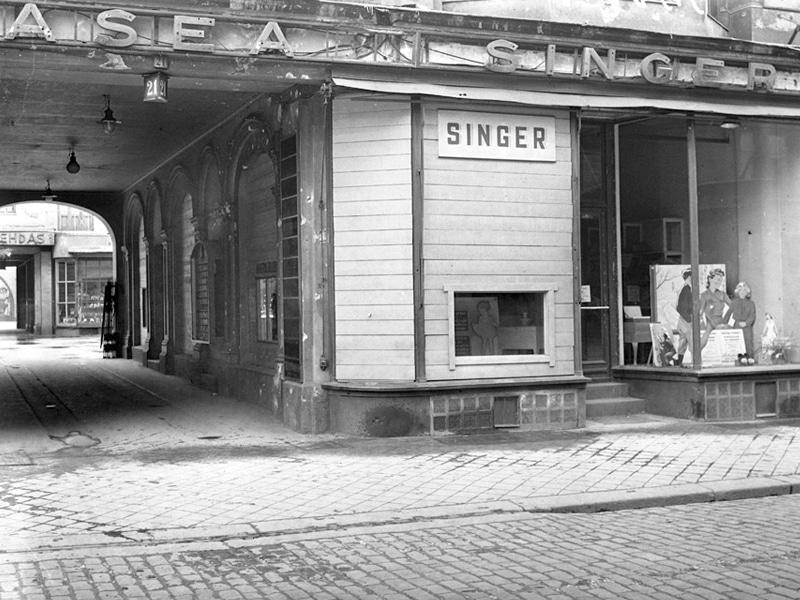
From the depression to an industry supplier
The years after the war would have been a golden age of construction if there hadn’t been a desperate need of supplies to be sold everywhere. All building materials and machines were regulated. Tallberg had made many deals with the Germans before the war, but they were lost almost completely after the war. Tallberg could have got new brands to represent, but they weren’t useful, because there was nothing to sell. When a batch of goods was received, the aim was to share it as equally as possible between different customers. Somehow, the company survived these brutal years and life slowlyreturned to normal.
Bertil was determined to develop the company in a more technical direction. The ironmonger’s grew more specifically into a supplier to industry. Bertil acted as the managing director until 1949 and stayed on as the chairperson of the board until 1963.
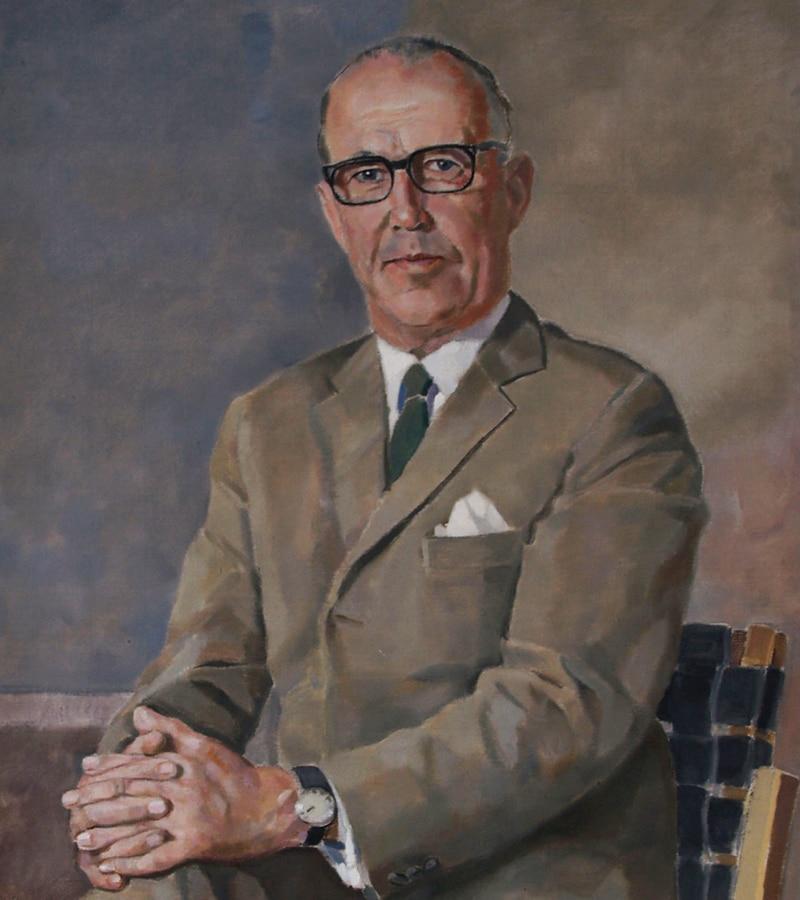
Change of generation and the start of the City-Center project
Already in the early 1930s, Bertil’s eldest son Eric had worked in the family company alongside his studies. He was appointed managing director after his father in 1949. During the era of Councillor of Commerce Eric Tallberg, the company again expanded outside Helsinki. The decision to establish a branch in Hanko was made in 1961 and after this, new locations were opened frequently. Most of these branches started out as the sales offices of the Atlas Copco department, but their operations quickly became more diverse. During Eric Tallberg’s period as managing director, sales offices were also set up in Tampere, Kuopio, Kokkola and Turku. A large raw material warehouse was set up in Hyvinkää. Side offices were also established in Rauma and Karhula. Eric Tallberg resigned as managing director at the end of 1975 and after this, acted as the chair of the Board of Directors until 1985.
The most famous construction project of the era was undoubtedly City-Center, or as Finns call it, “the Sausage Building”. When he drew the protrusion of the parking level, architect Viljo Rewell probably didn’t guess how famous his creation would become. The office and retail property was completed in 1964, and Tallberg Group’s holding in the property has since been passed on.
Drawn by Viljo Rewell, “the Sausage Building” is still a topic of discussion in the 2000s. Moving illuminated advertisements à la Piccadilly Circus have been planned for the building’s facade.
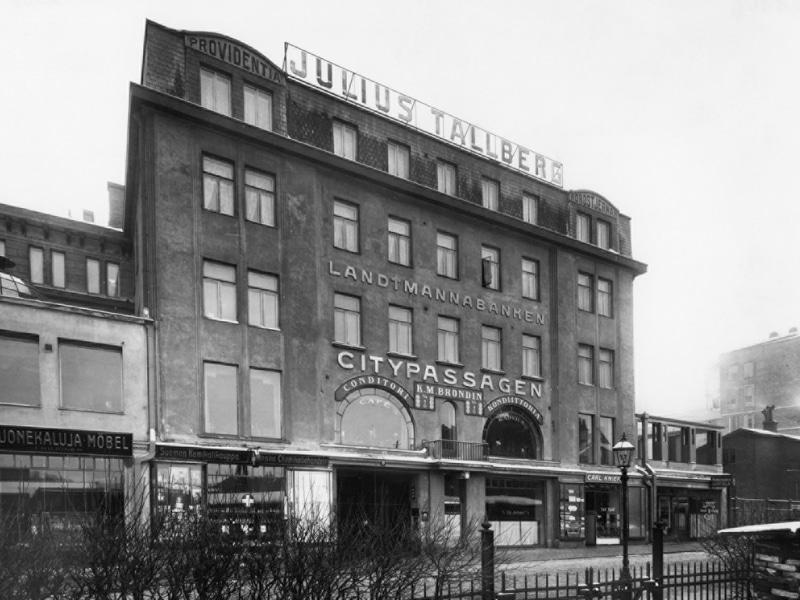
The fourth generation, operations expand…
The fourth generation of the company’s leadership was represented by Master of Science (Economics) Peter Tallberg. He entered the position during the economic slump but succeeded in steering the company through the crisis. Under his leadership, the company expanded and developed further. The first significant expansion was the acquisition of the Kotka office in the late 1970s. In 1979, the company bought the share majorities of Kekkonen Oy and Oy Soffco Ab, and these became Tallberg subsidiaries. Over the years, the company had acquired significant property assets, of which the City block was the most important in rental revenue.
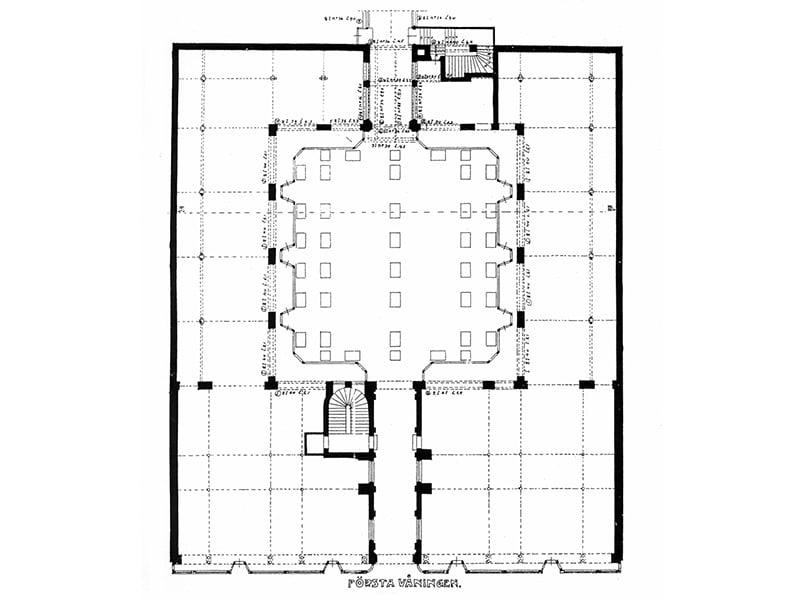
…and even more diverse
By the beginning of the 1980s, operations had expanded to quite a few different areas. The operations of the Julius Tallberg Corporation and its subsidiaries were therefore divided into four divisions: Atlas Copco, the machine department, and the subsidiaries Oy Soffco Ab and Kekkonen Oy formed the first division, the second focused on raw materials, the third comprised consumer functions, the ironmonger’s and Nautica, and the fourth focused on administration and finance. At the time, the group had a record 700 employees. The parent company alone had offices in 11 cities at the turn of the decade.
The City block underwent significant alterations in the early 1980s. This large-scale investment coincided with a global steel crisis, weak economic development and the devaluation of the Finnish mark, which meant the company struggled with its profitability. Published before Christmas in 1982, the company’s JT-uutiset magazine reveals the frustration of the managing director: “Prices of raw materials compared to manufacturing costs have never been as low as this year. The struggles of the global steel industry have ignited a crisis in the different phases of trade. The prospects for the metal industry are not the best, but I don’t think the trade situation can get any worse. This means that mild hopefulness about the improvement of profitability and a healthier competitive situation is justified.” However, the renovation and opening of the City-käytävä corridor resulted in a temporary turn for the better in consumer operations and shone a little light on the turmoil.
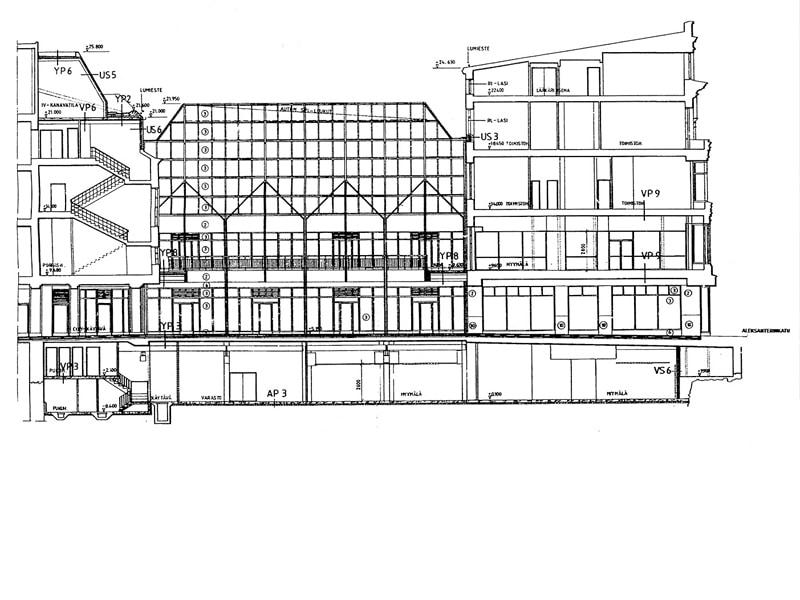
Towards a crisis
Despite the diversity of the operations, the company’s prospects were definitely gloomy in the early 1980s. Succeeding as an ironmonger’s would have required multiple volume, because the competition tightened the margins. And although some of the technical wholesales were healthy, credit losses wreaked havoc when builders went bankrupt. Consumer operations were more of a golden front for the ironmonger’s than an independently profitable business. The industry and consumer goods trade, sports equipment trade, leisure product or boat trade, all known by the general public, could not support the company. However, Julius Tallberg Corporation did not become a problem company, because it had a good financial standing and significant rental income. It was possible to use the rental income to cover the losses from the operations, which meant that radical cuts to the company’s functions were postponed, while a brighter future was awaited.
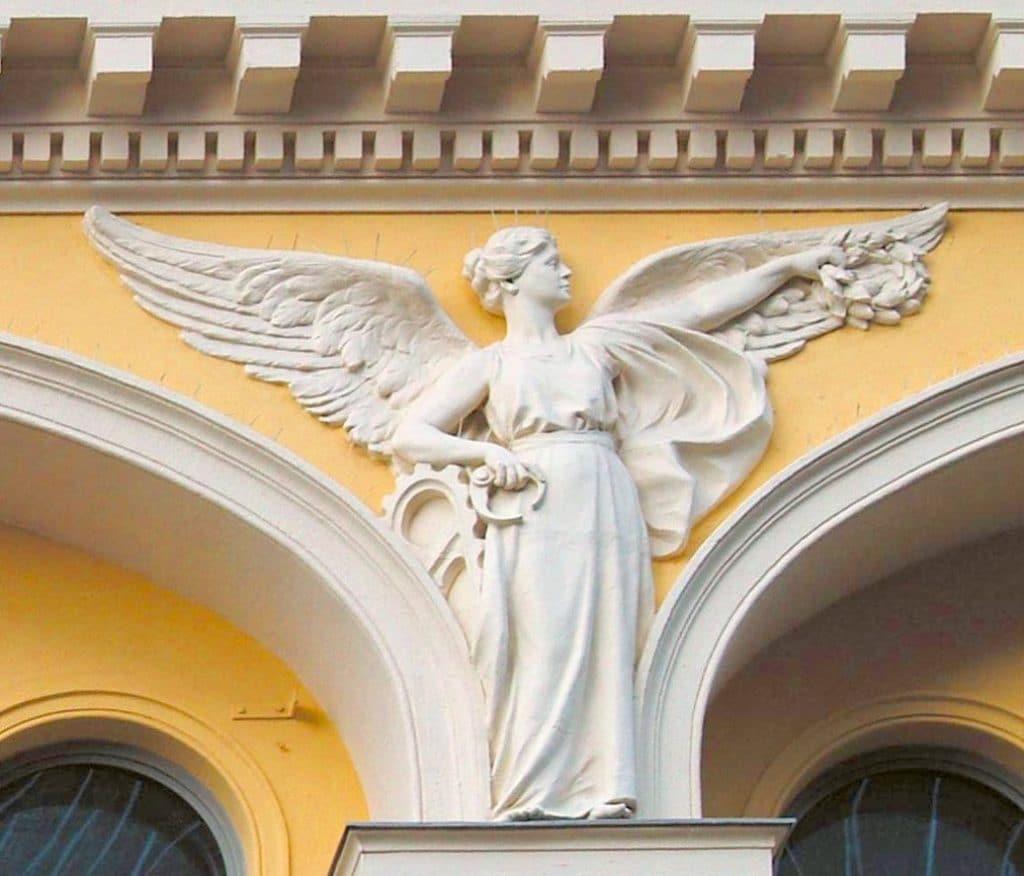
The fight over Tallberg
The end of 1985 and the beginning of 1986 was a time of great change for the Tallberg Corporation: Peter Tallberg resigned as managing director in late 1985. On 7 January 1986, an extraordinary general meeting accepted his resignation and that of two others members from the company’s board. At the same time, bank manager Jaakko Lassila was selected as a new member of the board.
The unprofitable but wealthy company had piqued the interest of parties wanting to take over the company above all because of its properties. The company’s ownership had decentralised over the generations, and a large proportion of the owners had no direct contact with the company’s practical operations. Some of the large family had already given up their ownership of the company in a 1984 transaction that was funded by giving up the Kaivokatu 8 property. When buyers interested in the significant property portfolio of the company appeared on the market, some of the existing owners were ready to give up their shares.
It had already been publicly announced that the SKOP bank and building company Haka had taken over Tallberg. But at the annual general meeting, shares don’t count, votes do. The parties attempting the takeover realised this too. To prevent the company from sliding into the hands of external players and being cut into pieces, some of the owners, led by chair of the board Thomas Tallberg, launched a successful counter offensive. As a result, the ownership, which had decentralised over four generations, was recentralised. For the second time in Tallberg’s history, the KOP bank played a crucial role. More than 70 years before, Julius Tallberg, a member of the Swedish-speaking business elite, could not get a loan he desperately needed from the Swedish-speaking banks, even though he offered a significant part of modern Helsinki as collateral. This was when Julius had invested all his money in buying Lauttasaari. However, he managed to get a loan of 700,000 marks from the Finnish-speaking side of the fence, from Kansallis-Osake-Pankki KOP, which was led by the future President of Finland, J. K. Paasikivi. This marked the beginning of a lasting business relationship and loyalty, which the bank under the leadership of its manager Jaakko Lassila showed seven decades later when it credited the ownership arrangements that were used to block the takeover of SKOP and the following quick shutdown.
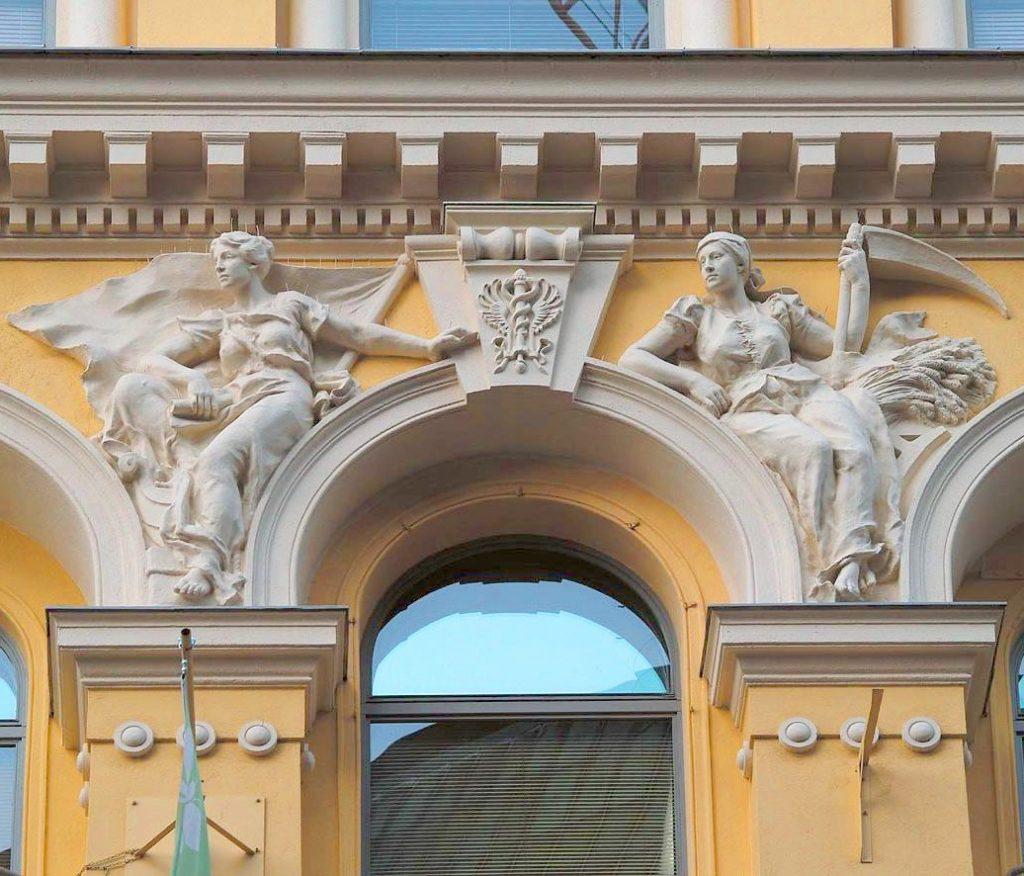
Time for reorganisation
Chief Financial Officer Sven Olof Granberg was the acting managing director during the brief transition period. On 1 May 1986, Licentiate in Technology Heikki Aurasmaa was called to lead the company. For the first time, the managing director was appointed from outside the family. At the same time, it was decided that the company’s operations would be centralised on its core industries. The annual report for 1986 states this: “The structure of the organisation was specified on 1 September 1986 with the purpose of focusing on the company’s main industries as a material, tool and machine supplier for construction and industry.” And it continued: “The principle of the ongoing strategic planning is to focus on overall construction deliveries and closely related industries, such as technical wholesales and agency operations. Property operations are a key part of the long-term operations of Julius Tallberg Corporation.”
It was decided that all other operations would be given up, but at the beginning of the 1990s, trimming the excess was still ongoing. Not all policies were adopted immediately. For instance, the boat trade persisted into the late 1980s. The transition also took time, because the owner wanted to give up unprofitable operations but avoid dismissals. They were talking about the jobs of approximately 300 people at a time when mass unemployment was being created in Finland as a result of mindless financial policy.
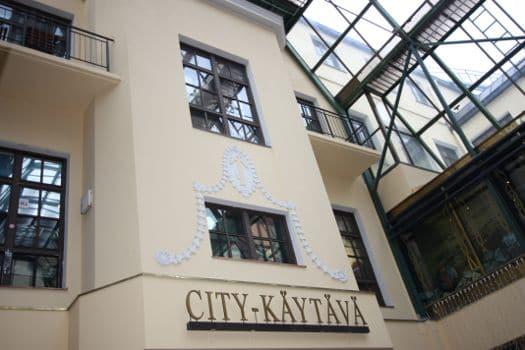
Arrangements of the 1990s
The depression in the early 1990s with the devaluation of the Finnish mark and sky-high interest continued the travails of the company until the mid-1990s. The company kept the industries where expertise was strongest and what was believed would also be profitable in the long term. Risto Tuuri served as managing director between 1990 and 1995, and made a huge effort to reorganise the company’s operations and structure. Before him, Henrik Lindblom had led the company for a short time. The early 1990s saw the controlled shutdown of the boat trade and the initiation of the industrial reorganisation of the construction machine trade. This saw the merger of the Hytec, Starckjohann and Tallberg construction machine operations. The result of this action, which proved profitable, was Ramirent Plc, a listed company of which the Julius Tallberg Corporation still owns approximately 20%. Already during the depression, the group also decided to invest in a high-quality new residential building in Lauttasaari. The building was completed in the late 1990s.
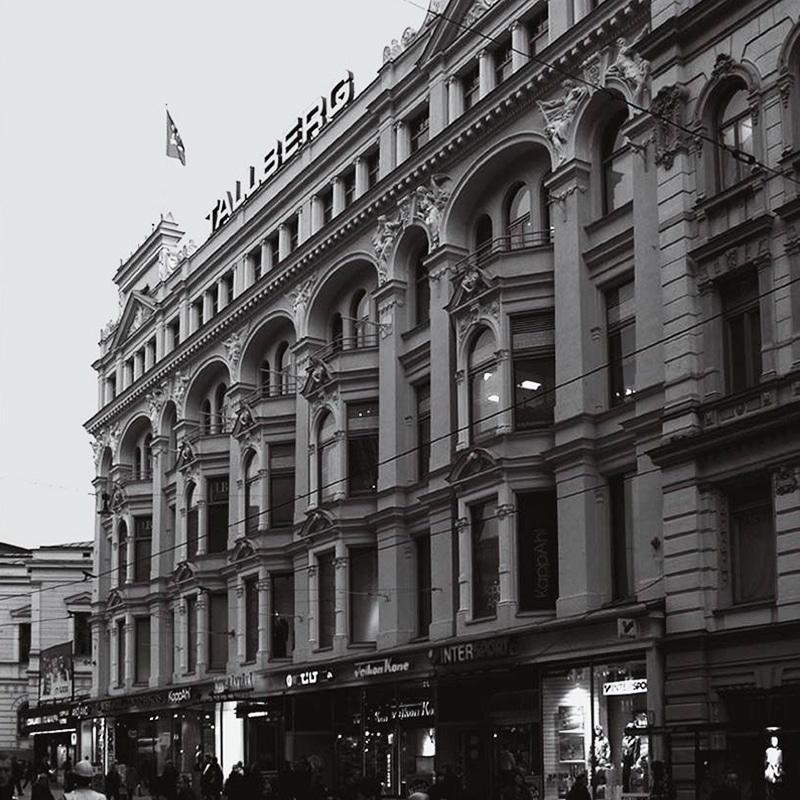
Operations to independent subsidiaries
Since 1989, operations have been realised in independent subsidiaries., which with the parent company form the Tallberg Group. The parent company looks after the funding of the subsidiaries and actively participates in their development. The parent company still has a significant property portfolio, including Aleksanterinkatu 21 with part of the City-käytävä corridor, industrial properties and warehouses. The company also has other investment assets, for example, a majority holding of the listed Julius Tallberg Real Estate Corporation and a significant holding in the construction machine rental company Ramirent Plc. The investment portfolio also includes the sixth largest holding of Fiskars Plc and other decentralised investment assets.
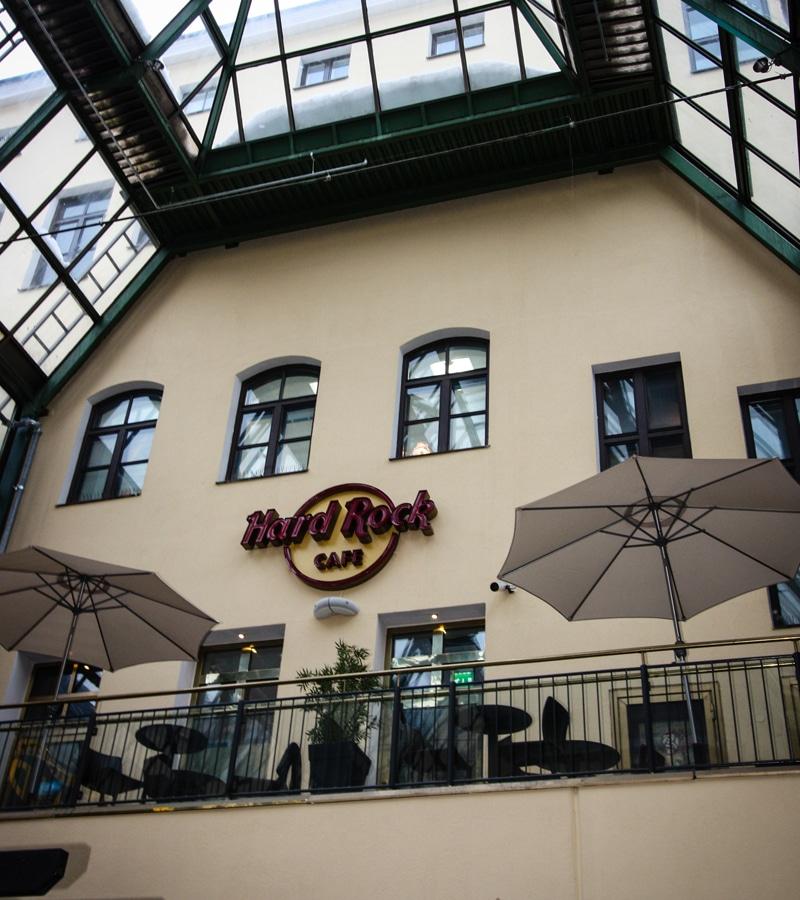
Finding new success
In 1995, Master of Science (Economics) Martin Tallberg was invited to become the managing director of Julius Tallberg Corporation. Now, the company had come full-circle: after a break of ten years, the managing director again came from the family. After the years of struggle, the company’s structure has been further clarified, and functions for which a sufficient market share cannot be achieved have been abandoned. On the other hand, industries with development potential have been strengthened. By acquiring Roboma Oy and merging it with Tallberg Maalauslaitteet Oy, the leading company in the surface processing and painting technology industry was created. The annual turnover of Tallberg Roboma has increased to a level of approximately EUR 5 million.
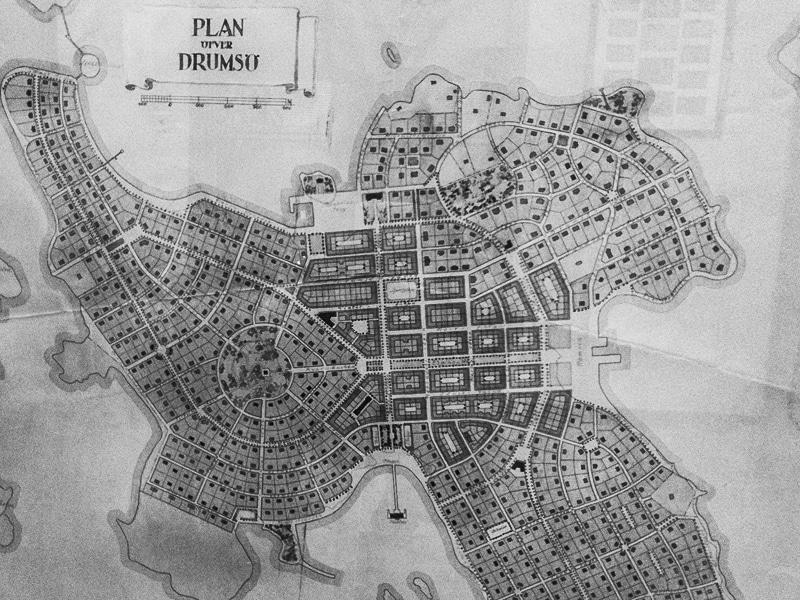
Tallberg Group
Tallberg Group has served Finnish industrial and trade companies for 140 years. Today, the Group’s operations and ownership focus on property investment and long-term investment in shares.
Julius Tallberg Corporation is the parent company of the group, and manages the funding of its subsidiary and participates in its development. The company manages its properties and its long-term investments.
Julius Tallberg Real Estate Corporation is a property investment company specialising in trade industry investments and their development.
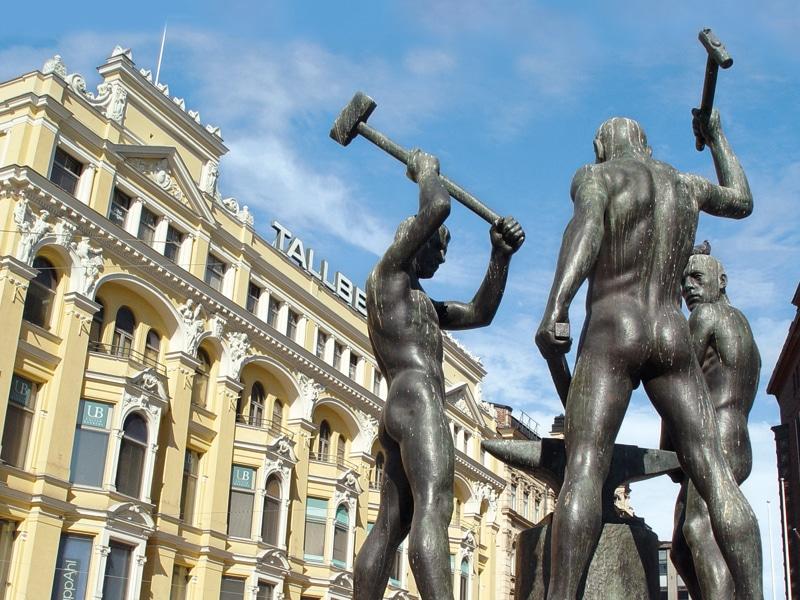
The spirit of Julius Tallberg lives on
The most visible symbol of Julius Tallberg’s life’s work is the Aleksanterinkatu 21 property and the City-käytävä corridor in Helsinki. But other reminders of him remain, thanks to everyone who has worked at the Julius Tallberg Corporation and the group over its 140 years. Few companies are as strongly associated with an image of reliability and high quality as Tallberg. Tallberg has had the patience to cherish these values in the good times, as well as the bad. There is a great development arc running from the days of Julius Tallberg to the current operations of the companies: property operations, technical trade and investments. Julius Tallberg was intrigued by property investment. He was, above all, creating the foundation for the industry’s funding operations. In addition to his own companies, he has plenty of holdings in other companies. So it’s fair to say that his spirit lives on in the Julius Tallberg Corporation.




